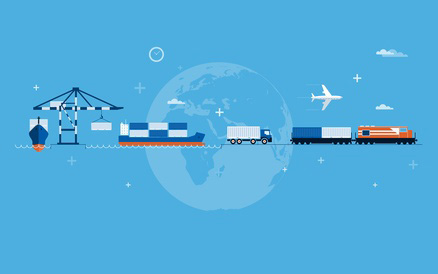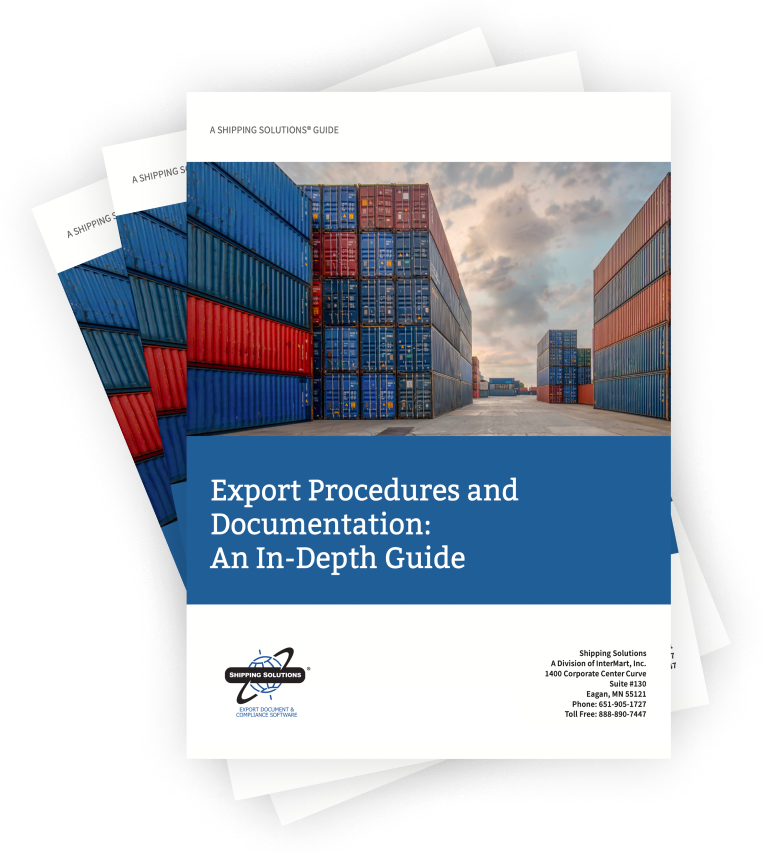The International Trade Blog
International Logistics: Four Critical Elements
On: August 29, 2010 | By:  Roberto Bergami |
4 min. read
Roberto Bergami |
4 min. read
 The transport of cargo is one of the most critical aspects of international trade. As essential as transport is, however, it is only a means to an end—goods are transported from origin to destination to meet demand.
The transport of cargo is one of the most critical aspects of international trade. As essential as transport is, however, it is only a means to an end—goods are transported from origin to destination to meet demand.
Demand is driven by what individuals wish to do with the product—be it in an industrial setting or a private setting. As an executive of a drill manufacturing company once said, "People do not buy 1/4-inch drill bits, they buy 1/4-inch holes."
The attributes of a product have an influence on its handling requirements and mode of transport across international boundaries. For example, live lobsters moving from Australia to Japan would travel by air due to their highly sensitive nature and perishability. When lobsters get stressed, they drop their tail—an obvious problem.
Other examples of perishable cargo include temperature sensitive materials such as fruit, vegetables and meat, although not all of these goods travel by air. There are also a number of items that are perishable due to seasonality: fashion items (these date quickly); computers (fragile, highly expensive and outdated very quickly); and special events (Formula 1 racing cars and Christmas decorations). The list could be expanded, of course, to include a variety of cargo that is transported across all modes of transport.
It must be remembered that transport does not improve a product—at best it will do it no harm. A faulty product is not fixed simply because it is transported between two places. However, a good product can quite easily be made defective because it has been transported between two places.
With this in mind, there are four important elements of international logistics that are critical to cargo movements:
- Integrity,
- Pedigree,
- Chain of Custody, and
- Track and Trace.
Each of these is discussed below. However, before discussing these, it should be noted that the choice of the Incoterms 2020 rule will determine who is responsible for the transport formalities, with consequential impact on the trading parties. For example, in EXW terms, the seller is not concerned with transport arrangements, as these belong to the buyer, whereas with delivered terms like DAP, DPU or DDP, the responsibility for transport arrangements rests with the seller.
Integrity
The integrity of the consignment is probably the most critical element of transportation. At the end of the journey the consignee is entitled to receive a product that is in accordance with the contractual requirements. It is very likely that when the product left the seller's premises the product was in good condition and in conformity with the contractual requirements, but what has happened during transportation? Was the product pilfered? Did it arrive damaged, or was it improperly handled/treated during transportation? In other words, has it been tampered with? To build quality assurance in the transportation of products, some practices, now fairly well established, are useful. In the case of temperature critical products, for example, it is customary to include a temperature monitor (or several of these) in one consignment. If the product is traveling by air, it is also usual to put ice inside shipping boxes.
To minimize breakdown of consignment integrity, the consignor of the goods needs to properly pack and label the consignment in accordance with the contractual requirements and provide written instructions to the carrier on how to handle the cargo. Where problems arise, records should be detailed in an exception report and monitored accordingly. Where similar events take place over a period of time, it may be necessary to consider alternative arrangements including changing the carrier, routing or handling agents.
Pedigree
Where did the product come from? It is important to know the origin of the product both from a product quality perspective and also for customs formalities. Depending on the product in question, traceability to origin may be regulated, such as in the case of meat in the European Union. The label on packs of meat sold in supermarkets must display its origin. This requirement arose from the Mad Cow disease and subsequent Foot and Mouth disease outbreaks. If a firm is operating under these circumstances, then traceability assumes greater importance. This leads us to the next point.
Chain of Custody
Who handled it? The handling of the product from a physical perspective will directly impact the integrity of the consignment. Rough handling puts stress on the product with the possibility of latent damage downstream or more immediately apparent problems in the case of obviously damaged goods. From a risk management point of view, it is important to know who has custody of the goods and at which stage of the transport process, in order to identify the party responsible and liable for delays and the compromising of the consignment. This leads us to the last point.
Track and Trace
Where is it? Transport visibility is desirable because it enables us to pinpoint exactly where the consignment is at any stage of the process. This enables us to plan for the timely arrival of goods or devise contingency plans in case of delays. For manufacturing firms following the principles of just-in-time and typically carrying minimal buffer stock, early warning of delays is vital in triggering alternate action plans to avoid shutdowns of production lines. Visibility also enables us to evaluate the performance of the carrier against either industry standards or delivery promises. It is very common for carriers to provide track and trace options free of charge via the internet, providing virtually real time information.
Transport is inescapable in international trade. Given the high impact of delivery delays, it is recommended that importing firms implement transport evaluation programs that identify the origin of the product, the chain of custody, and visibility en route to ensure the integrity of the consignment is not compromised.
Like what you read? Subscribe today to the International Trade Blog to get the latest news and tips for exporters and importers delivered to your inbox.

About the Author: Roberto Bergami
A full time member of staff at Victoria University, Melbourne, Australia, since 1998, Roberto holds a PhD (Thesis title Risk Management in Australian Manufacturing Exports: the Case of Letter of Credit to ASEAN), a Master in Education and Master of Business by Research (Applied Economics). Roberto additionally holds the Certified Documentary Credit Specialist qualification.
He is currently a Senior Lecturer in the College of Business and Visiting Professor at the University of South Bohemia in Ceske Budejovice, the Czech Republic. Roberto is also an Associate Researcher of the Centre for Cultural Diversity and Wellbeing and the Centre for Strategic and Economic Studies. Roberto has maintained his involvement with industry through a number of peak associations where he enjoys various grades of senior level membership.
Roberto’s main areas of research interests in international trade focus on government regulations, delivery terms (Incoterms), international payment terms and market entry barriers. His other research interests include the development of communities of practice, online teaching and online communities, migration from Emilia-Romagna (Italy) to Australia and teenage/youth dialect.


